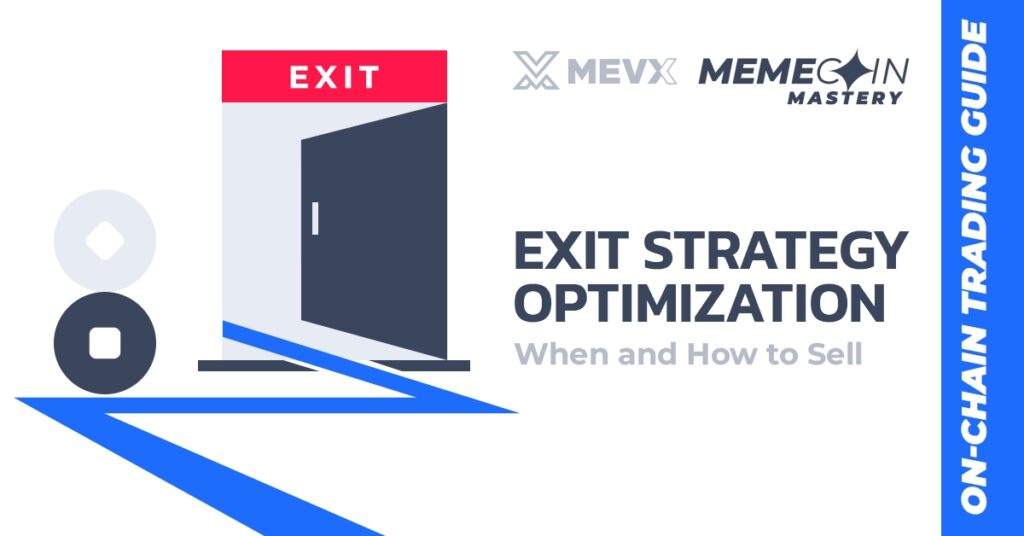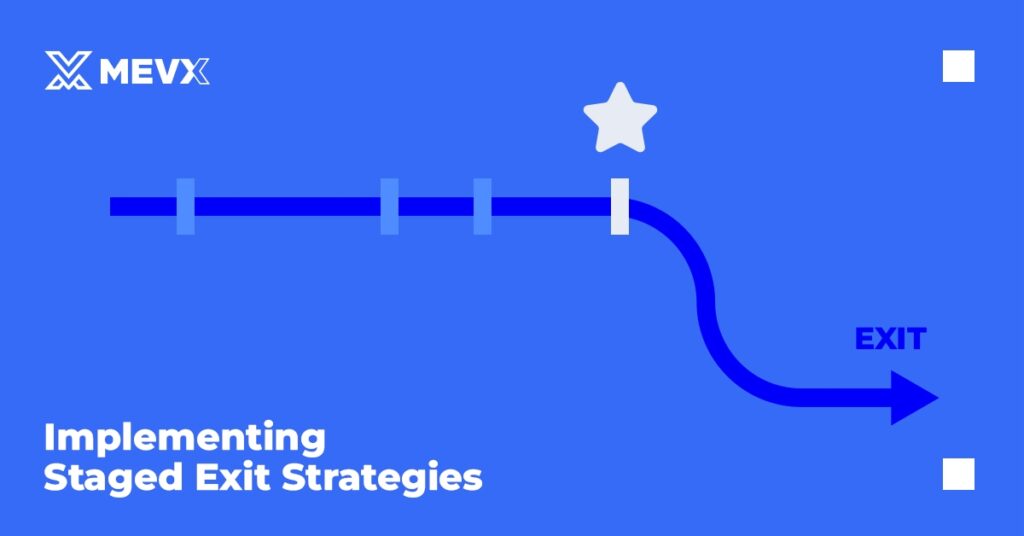Mastering entry strategies is only half the battle in meme coin trading. The ability to exit positions optimally often determines the difference between substantial profits and devastating losses. Unlike traditional markets where technical analysis dominates exit strategy, meme coin trading requires a sophisticated understanding of on-chain signals that can provide early warnings and confirmation for exit timing.

Understanding On-chain Exit Strategy
The blockchain never lies, and smart traders leverage this transparency to identify optimal exit points before they become obvious to the broader market. Successful exit strategy rely on monitoring specific on-chain indicators that signal changing market dynamics.
Liquidity Pool Health Monitoring
The first critical signal to monitor is liquidity pool stability. When major holders begin exiting, you’ll often see gradual liquidity removal that precedes significant price dumps.
Track the total value locked (TVL) in major pools and watch for sustained decreases over 6-12 hour periods. A 15% or greater reduction in liquidity often signals that informed traders are positioning for exits.
Use Solscan’s pool analytics to monitor liquidity changes in real-time. Set alerts for pools where you hold positions, particularly watching for large withdrawal transactions that could indicate insider knowledge of negative developments.
Whale Movement Analysis
Large holder behavior provides crucial exit timing intelligence. Monitor wallet addresses holding more than 1% of total supply for unusual activity patterns. When multiple whale wallets begin reducing positions simultaneously, this often precedes broader market selling pressure.
Advanced traders maintain watchlists of top 20-50 holder addresses for each position. Tools like SolanaFM allow you to set up automated alerts when these addresses execute large transactions, providing early warning of potential market shifts.
Implementing Staged Exit Strategy
Rather than attempting to time perfect exits, sophisticated traders implement systematic staged approaches based on on-chain confirmation signals.

The Three-Tier Exit Framework
Structure exit strategy around on-chain confirmation levels rather than arbitrary price targets.
The first tier (25-30% of position) triggers when you observe initial warning signs: decreased buying pressure, slight liquidity reduction, or early whale movement. This protects against total loss while maintaining upside exposure.
The second tier (40-50% of position) executes when multiple on-chain indicators align: sustained liquidity outflows, increased large transaction frequency on the sell side, or developer wallet activity suggesting distribution. This tier captures significant profits while maintaining meaningful exposure for potential continued upside.
The final tier (remaining position) exits based on clear confirmation of broader market shift: major liquidity pool exits, coordinated whale selling, or technical indicators showing breakdown in price structure.
Volume-Weighted Exit Timing
Analyze transaction volume patterns to optimize exit execution. On-chain data reveals natural volume cycles throughout trading sessions. Plan exits during high-volume periods to minimize price impact and ensure better execution.
Monitor the relationship between buy volume and sell volume over rolling 4-hour periods. When sell volume begins consistently exceeding buy volume by 20% or more, accelerate your exit timeline across all tiers.
Monitoring Holder Behavior for Exit Timing
Understanding holder psychology through on-chain data provides significant advantages in exit timing decisions.
Holder Distribution Shifts
Track changes in holder concentration over time. When token distribution begins concentrating into fewer wallets, this often indicates accumulation by informed traders preparing for coordinated exits. Conversely, when distribution spreads across more addresses, it may signal retail FOMO that precedes market tops.
Use holder analysis tools to monitor the percentage of supply held by the top 10, 50, and 100 addresses. Significant changes in these percentages over 24-48 hour periods often precede major price movements.
New Holder Acquisition Rates
Monitor the rate of new unique holders joining the token ecosystem. Sustained increases in new holder acquisition often support continued price appreciation, while declining new holder rates suggest momentum exhaustion.
Advanced on-chain analytics can reveal when new holder acquisition rates fall below specific thresholds relative to price appreciation, creating divergence signals that often precede correction phases.
Common Exit Mistakes and Avoidance Strategies
Emotional Override of On-chain Signals
The most common mistake involves ignoring clear on-chain warning signs due to emotional attachment or greed. Establish systematic rules for exit execution that override emotional decision-making.
When your predetermined on-chain triggers activate, execute planned exits regardless of short-term price action or social media sentiment.

Inadequate Position Documentation
Maintain detailed records of your entry reasoning and exit criteria for each position. Document which on-chain metrics influenced your initial investment thesis and establish clear parameters for when these metrics indicate exit timing.
Ignoring Gas Cost Implications
Factor transaction costs into exit strategies, particularly for smaller positions. Solana’s relatively low fees provide more flexibility than Ethereum-based trading, but rapid exit execution during high network activity can still impact net returns significantly.
Systematic Exit Implementation
Successful traders develop repeatable systems rather than relying on intuition for exit decisions. Create standardized checklists incorporating the on-chain signals most relevant to your trading style and risk tolerance.
Establish clear communication channels with your chosen trading tools and analytics platforms to ensure rapid signal detection and execution capability. Consider automated alert systems that can trigger exit orders when predetermined on-chain conditions are met.
The sophistication of your exit strategy often determines long-term trading success more than entry timing precision. Master these on-chain-driven exit techniques to consistently capture profits while minimizing downside exposure in the volatile meme coin markets.
Continue building your on-chain trading expertise with the next article on MevX: “Gas Optimization and Transaction Prioritization” – where we’ll explore advanced techniques for ensuring fast, cost-effective trade execution during critical market moments.
Share on Social Media:
